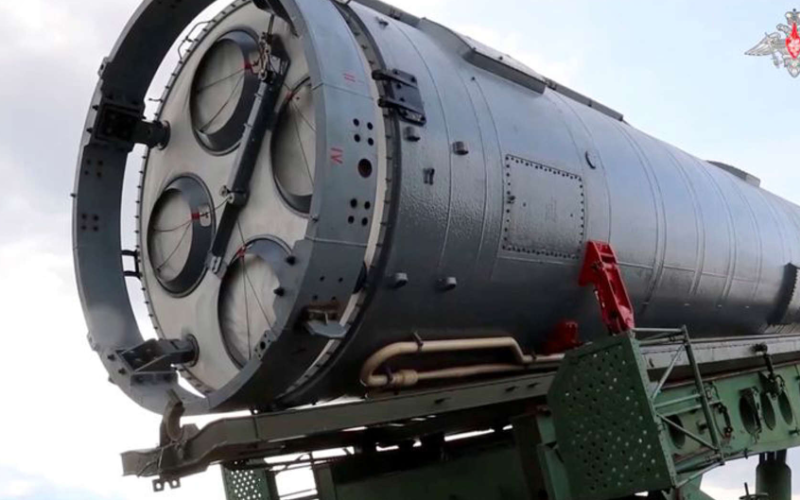Russia’s rocket forces have recently loaded an intercontinental ballistic missile (ICBM) featuring the nuclear-capable Avangard hypersonic glide vehicle into a launch silo, as reported by a defense ministry TV channel. This move is part of Russia’s ongoing efforts to modernize its strategic missile arsenal. President Vladimir Putin unveiled the Avangard in 2018, positioning it as a response to perceived threats posed by the United States’ development of advanced weapons and missile defense systems.
The Avangard system boasts a hypersonic glide vehicle capable of reaching speeds of up to 27 times the speed of sound (approximately 21,000 miles per hour or 34,000 kilometers per hour). The unique feature of this technology is its ability to detach from the rocket as it approaches the target, allowing for sharp maneuvers outside the rocket’s trajectory. This characteristic enhances its evasive capabilities, making it a formidable component of Russia’s strategic defense.
Footage from the ‘Zvezda’ television channel, owned by the Russian defense ministry, showcased the meticulous process of loading a ballistic missile, equipped with the Avangard glide vehicle, into a launch silo. The silo, located in the Orenburg region near Kazakhstan, is the same facility where Russia installed its first Avangard-equipped missile back in 2019.
The deployment of the Avangard comes against the backdrop of evolving global dynamics in arms development. Both Russia and the United States, as major nuclear powers, have lamented the erosion of arms-control treaties designed to mitigate the arms race during the Cold War. Despite expressing regrets, both nations, along with China, are actively engaged in developing new weapons systems, with a particular emphasis on hypersonic capabilities.
The strategic competition between the United States and Russia extends beyond the realm of nuclear capabilities. While both nations have acknowledged the deterioration of arms-control agreements, they also position each other differently in terms of threats. The United States identifies China as its primary competitor and Russia as a major nation-state threat. President Joe Biden frames this era as an existential contest between democracies and autocracies, emphasizing the evolving geopolitical landscape.
The deployment of the Avangard hypersonic glide vehicle underscores Russia’s commitment to advancing its strategic capabilities. As global powers navigate a complex landscape of arms development, the continued modernization of weaponry introduces new dimensions to geopolitical relations. The evolving dynamics between the United States, Russia, and China highlight the ongoing challenges in maintaining global stability amid advancements in military technology.








